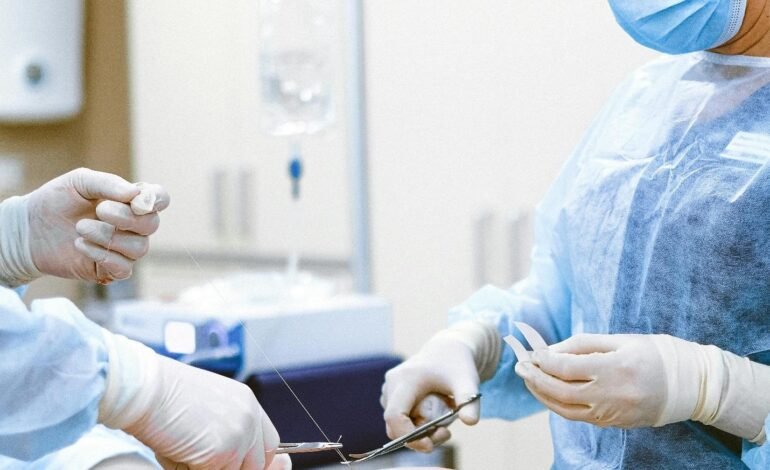6 Risks of Inserting Silicone into Your Body

Silicone injections have become a popular option for body modification and cosmetic enhancement, particularly in cities like Miami, where individuals seek aesthetic changes. While the appeal of a quick and relatively affordable procedure is tempting, the risks associated with inserting silicone into the body are substantial. Unlike medical-grade silicone used in implants, free silicone injections can lead to severe health complications, often requiring expensive and painful removal procedures.
Understanding the risks that come with silicon injections is crucial before making any cosmetic decisions.
1. Risk of Infection
One of the most immediate concerns following silicone injections is the risk of infection. Because silicone is a foreign substance, the body often reacts negatively, creating an environment where bacteria can thrive. Infections can appear shortly after the procedure, causing symptoms such as redness, swelling, pain, and heat at the injection site. In severe cases, these infections can spread, leading to abscesses and even sepsis, a life-threatening condition that can result from untreated bacterial infections.
In some instances, these infections may require hospitalization and antibiotic treatment. For many, the infection risk alone outweighs the perceived benefits of the cosmetic change. People who opt for silicone injections, especially in non-medical settings, increase their chances of experiencing these complications. The lack of sterile conditions during the procedure can further heighten the infection risk.
2. Hard-to-Remove Foreign Substances
Silicone injections are a permanent procedure, and once the substance enters the body, it becomes incredibly difficult to fully remove. Over time, the silicone can shift and embed itself deeply into the surrounding tissues, making the removal process not only complex but often incomplete. This can result in long-term health issues, including chronic inflammation and tissue damage.
If you are looking for silicone injection removal Miami offers specialized clinics that are experienced in dealing with these challenges. However, even with advanced medical expertise available in Miami, complete removal is rarely a straightforward process. Patients often require multiple surgeries over a prolonged period. Understanding the risks of incomplete removal is crucial for anyone considering silicone injections, as the consequences may last far beyond the initial procedure.
3. Long-Term Health Complications
Beyond the initial risks, silicone injections can cause long-term health issues that develop over time. Once injected, silicone can trigger chronic inflammation, leading to a constant cycle of swelling, pain, and discomfort. This prolonged inflammation can cause permanent tissue damage, affecting the surrounding muscles and nerves.
In some cases, individuals may experience autoimmune reactions, where the body continues to attack the foreign silicone, resulting in symptoms that resemble autoimmune diseases like lupus or rheumatoid arthritis. These reactions are often misdiagnosed, leading to years of treatment without addressing the root cause—silicone injections. Such complications highlight the seriousness of choosing this type of body modification.
4. Migration of Silicone
Silicone is not a stable substance when injected freely into the body. Over time, the silicone can migrate from the original injection site to other areas of the body, causing lumps, hardening, and visible deformities. For example, silicone injected into the buttocks may move to the lower back, thighs, or even into the bloodstream.
This migration creates unpredictable results that can cause both physical discomfort and cosmetic disfigurement. As the silicone moves, it can also trigger inflammation in other areas, compounding the health risks and making any future removal efforts even more challenging. The unpredictable nature of silicone migration adds another layer of danger to the procedure.
5. Blockage of Blood Vessels
One of the most dangerous risks of silicone injections is the potential for silicone to enter the bloodstream. If injected improperly, silicone can block blood vessels, leading to embolisms. This can occur when silicone particles enter the veins and travel to vital organs such as the lungs, heart, or brain, causing blockages that may result in strokes, heart attacks, or even death.
This risk is heightened when injections are administered by unlicensed practitioners who may not fully understand the anatomy or safety protocols required for such procedures. Once silicone enters the bloodstream, the damage is often irreversible and life-threatening, making this one of the most serious risks associated with silicone injections.
6. Rejection and Allergic Reactions
Silicone injections carry a significant risk of rejection and allergic reactions. Because silicone is a foreign substance, the body may try to fight against it, resulting in an immune response. This can lead to severe inflammation, pain, and the formation of hard lumps around the injection site. In some cases, the body may completely reject the silicone, attempting to expel it from the tissues. This can cause extensive tissue damage, infections, and even the need for emergency medical intervention.
Allergic reactions can also be a major issue for individuals who are sensitive to the materials in silicone. Symptoms can range from mild swelling and itching to severe reactions like hives, difficulty breathing, or anaphylaxis. For those who experience an allergic reaction, removing the silicone becomes urgent, yet, as discussed previously, it is often a complicated and incomplete process.
In conclusion, while silicone injections might seem like an easy way to achieve aesthetic goals, they come with significant risks. Understanding the complexities of removing silicone and the permanent impact it can have on your health should prompt anyone considering these procedures to think carefully about their decision.














